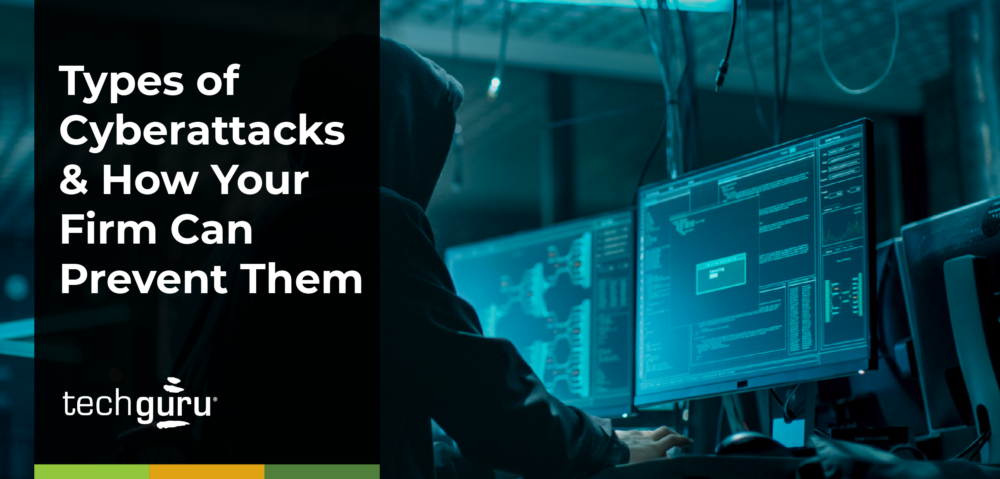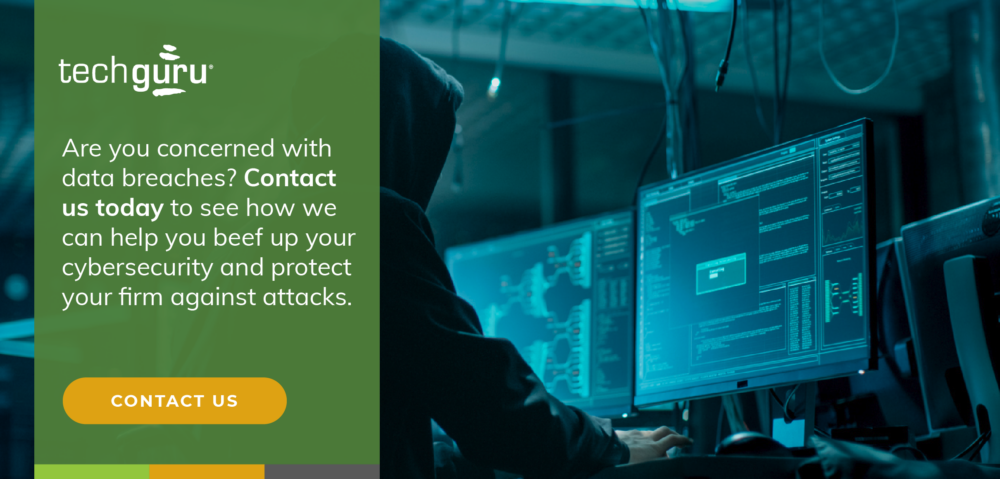
Data security is vital for accounting firms because of the sensitive data that they manage every single day. The most common cyberattacks require prevention methods that mitigate these data breaches.
It can take more than half a year for a company to detect a data breach, and it can take even longer to restore data security. The problems caused by a data breach are sometimes irreversible.
So, what can accounting firms and CPAs do to protect this precious asset? First, they must be familiar with the most common types of cyberattacks. Once they know what they are, they can work on cyberattack prevention methods.
5 Well-Known Types of Cyberattacks
Cybercriminals look for vulnerabilities in data security processes to gain access to valuable information they can sell on the dark web. These are the most well-known and extremely damaging cyberattacks for accounting firms:
1. Malware
Malicious software, known as malware, is a term security personnel use in reference to intrusive or hostile files or programs designed to exploit devices. It is done at the user’s expense to the benefit of the cybercriminal.
Various types of malware exist, but all use evasion techniques devised to trick users. Attackers also use this malicious software to evade security controls that allow them to establish themselves on a device or system without permission.
These are the three most common forms of malware:
- Ransomware: A program that encrypts files of victims so that attackers can ransom the data for money.
- Trojan horses: A program that a user will download or install because it appears to be a harmless program. Cybercriminals can then execute whatever task is necessary to access critical data.
- Spyware: A program that monitors a victim’s internet activity, spies on sensitive data, and tracks login credentials, often without the user’s knowledge or consent.
2. Phishing
Cybercriminals perpetrate phishing frauds by masquerading as a reputable entity (like a bank, tax department, or government official). They then distribute malicious attachments or links to trick their victims into releasing sensitive data. This includes:
- Credit card details
- Banking information
- Passwords
- Intellection property
- Social security numbers
- Other personal information
One form of phishing attack is called business email compromise (BEC), which targets employees from specific industries (like accounting firms). According to the FBI, BEC attacks caused losses of approximately $1.7 billion to unsuspecting companies in 2019.
3. Distributed Denial-of-Service (DDoS)
A DDoS is where multiple compromised computer systems attack a target (like a website, server, or network resource), causing users of the target resource denial of services. It causes the system to slow down or crash due to a flood of incoming messages, malformed packets, or excessive connection requests. Legitimate users are then denied access.
In the first half of 2020, over 4.8 million DDoS attacks took place. That was a 15% increase from the previous year. Unfortunately, attackers are harnessing the power of AI to increase the success and effectiveness of these types of attacks.
4. Cross-Site Scripting (XSS)
XSS attacks are another type of injection attack. Cybercriminals inject data, like malicious scripts, into trusted websites’ content. These attacks can occur when untrusted sources are permitted to inject their own code into web applications.
That malicious code gets delivered to a victim’s browser through dynamic content. It allows hackers to write malicious scripts in a myriad of languages in another user’s browser. These other languages include:
- Java
- JavaScript
- Flash
- Ajax
- HTML
Attackers then have access to steal session cookies. That enables the cybercriminal to pretend to be that user. Hackers can also use it to deface websites, spread malware, phish for credentials, create havoc on social networks, and execute more damaging attacks.
5. Structured Query Language (SQL) Injection Attacks
Databases that are connected to websites are susceptible to SQL injection attacks. SQL queries are action requests on a database.
A well-constructed malicious request can create, modify, or delete stored datasets. It can also read and extract information.
In 2020, Freepik and Flaticon experienced an SQL injection attack in which hackers stole the emails and password hashes of 8.3 million users. It was a costly attack that impacted the company’s reputation.
How Accounting Firms Can Avoid Cyberattacks
The more people and devices connected to a network, the more chances for a cyberattack. The more value that network has, the more costly it is to raise the security to the point hackers give up. That means that security teams must accept that the firm’s network will constantly be under attack.
However, understanding how different types of cyberattacks work, mitigating risks, and developing strategies can minimize the damage nefarious characters can cause. Here’s how accounting firms can avoid cyberattacks:
- Evaluating infrastructure vulnerabilities: Hackers exploit weaknesses in their victim’s IT infrastructure. Security personnel must implement software strategies with round-the-clock data security features.
- Assessing human-based vulnerabilities: Human error is the primary cause of data breaches. Employees will unwittingly involve a company with a phishing scam. Failure to use a strong enough password is another type of human-based vulnerability. Firms can combat this by restricting download capabilities and strict password requirement settings.
- Preventing malware-infected attachment downloads: Another form of human error is either caused by unintentional action or lack of action by downloading attachments containing malware. Firms can assess the level of cybersecurity awareness among staff with a simulation campaign.
- Check for exploitable data exposures: A defense-in-depth strategy is critical to decreasing most cyberattacks’ success rates. Firms should test these strategies regularly through penetration tests and vulnerability assessments.
- Security awareness training: A critical element of a firm’s cybersecurity plan is training staff to understand how cyberattacks occur. CPA firms need the ability to adapt and deploy new security protocols if they are going to survive the endless battle against cyberattacks.
Implementing Cybersecurity Strategies Through Integration
Cyberattacks are a clear and present danger for accounting firms and corporations that manage sensitive datasets. The 2020 World Economic Forum Global Risks Report ranked cyberattacks as the number one human-caused risk in data collection.
At Tech Guru, we have nearly two decades of experience combating the risks associated with data storage. Our clients trust that we will develop a data security strategy that mitigates these threats.
Are you concerned with data breaches? Contact us today to see how we can help you beef up your cybersecurity and protect your firm against attacks.

